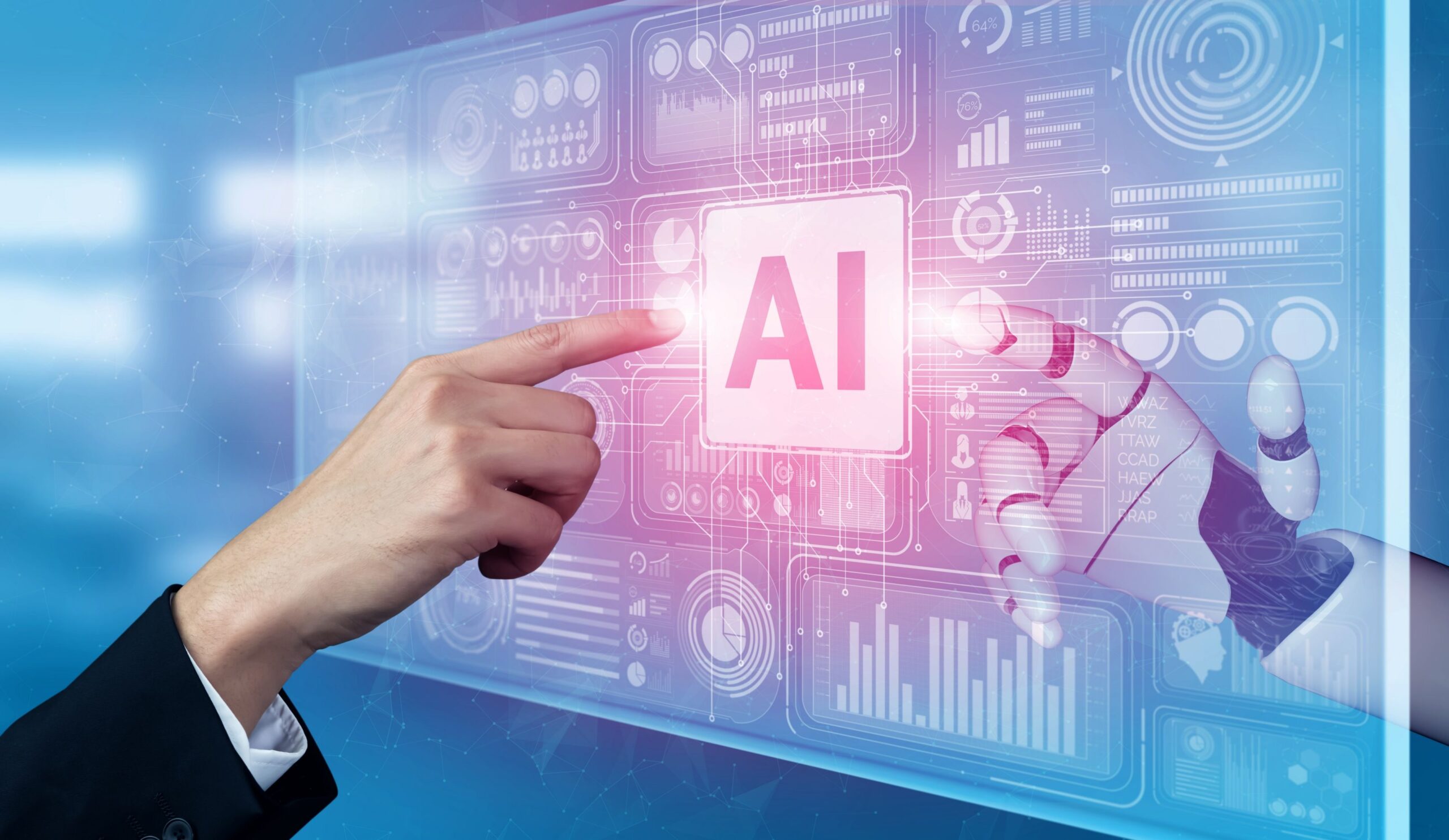The 2025 Revolution in Business Support Through AI Customer Service
In 2025, Artificial Intelligence (AI) has reshaped the landscape of customer service, marking a revolutionary shift towards more efficient and personalized business support. This transformation is characterized by AI’s deep integration into customer service platforms, fundamentally changing how businesses interact with their customers and streamline support operations.
The Transformation of Customer Service by AI
In 2025, AI-powered customer service platforms have fundamentally transformed how businesses engage with their customers, shifting from reactive support to proactive, intelligent interactions. Traditional models, reliant on human agents handling repetitive queries, have given way to hyper-automated systems that learn, adapt, and resolve issues in real time. The efficiency gains are staggering—AI-driven platforms now process routine requests 10 times faster than human teams, freeing businesses to focus on complex, high-value interactions where human empathy remains irreplaceable.
Scalability, once a bottleneck for growing enterprises, is now seamless. AI systems effortlessly handle spikes in demand, whether from seasonal surges or viral customer inquiries, without compromising response times. Unlike human teams constrained by shifts and fatigue, AI operates 24/7, ensuring consistent support across time zones. This reliability has elevated customer expectations—consumers now anticipate instant resolutions, and businesses failing to meet this standard risk losing loyalty.
Personalization has reached unprecedented levels. AI platforms analyze vast datasets—past interactions, purchase history, even sentiment patterns—to tailor responses dynamically. A returning customer isn’t just a ticket number; the AI recognizes their preferences, anticipates needs, and even adjusts tone to match their emotional state. This isn’t scripted politeness but context-aware engagement, making interactions feel uniquely human despite being automated.
The shift hasn’t eliminated human roles but redefined them. Agents now oversee AI systems, stepping in for nuanced escalations while AI handles the bulk of queries. This symbiosis maximizes efficiency while preserving the human touch where it matters most. As we move toward AI handling 95% of interactions, this chapter’s insights set the stage for understanding how businesses and customers alike are adapting to a world where AI isn’t just an option—it’s the backbone of customer service.
AI Dominance in Customer Interactions
By 2025, AI-powered customer service platforms have achieved near-total dominance, handling an estimated 95% of all customer interactions. This seismic shift has redefined business support, as AI-driven voice and text systems now serve as the primary touchpoints between companies and consumers. The implications are profound—businesses that once relied on human agents for routine inquiries now leverage AI to deliver instantaneous, scalable, and hyper-personalized responses, while customers have grown to expect seamless, 24/7 accessibility.
The efficiency gains are staggering. AI systems process queries in milliseconds, reducing average resolution times from hours to seconds. Advanced sentiment analysis ensures interactions feel empathetic, while machine learning tailors responses based on individual customer history. For businesses, this means:
- Cost reduction: Automating routine tasks slashes operational expenses by up to 40%, freeing human agents for high-value engagements.
- Scalability: AI handles millions of simultaneous interactions without degradation in quality, a feat impossible with human-only teams.
- Data-driven insights: Real-time analytics uncover trends, enabling proactive service improvements and personalized marketing.
For customers, the shift has normalized always-on support. AI’s ability to recall past interactions and predict needs creates a frictionless experience—whether resolving billing disputes, recommending products, or troubleshooting technical issues. However, this reliance on AI also raises expectations; consumers now demand near-perfect accuracy and intuitiveness, pushing businesses to continuously refine their algorithms.
The transition hasn’t eliminated human roles but redefined them. While AI manages the bulk of interactions, complex or emotionally charged cases are seamlessly escalated, ensuring a balanced hybrid model. As AI continues to evolve, its dominance in customer interactions cements its role as the backbone of modern business support.
Conversational Virtual Agents
In 2025, conversational virtual agents have become the backbone of AI-powered customer service, delivering immediate, natural interactions that mimic human conversation. These AI chatbots leverage natural language processing (NLP) and machine learning to interpret customer intent, whether through text or voice, with near-human accuracy. Unlike rigid, scripted bots of the past, modern virtual agents dynamically adapt to context, slang, and even emotional cues, making interactions feel seamless and intuitive.
One of the most transformative aspects is their ability to autonomously resolve common inquiries, such as order tracking or billing questions, while recognizing when an issue requires human intervention. Advanced sentiment analysis allows these agents to detect frustration or confusion, triggering a smooth escalation to live support—without forcing customers to repeat information. This hybrid approach ensures efficiency while maintaining a human touch for complex scenarios.
Businesses benefit from 24/7 availability, reduced operational costs, and consistent service quality across languages and regions. Meanwhile, customers enjoy instant resolutions without hold times, fostering loyalty and satisfaction. The integration of these agents with CRM systems further personalizes interactions, as AI recalls past interactions and preferences, creating a cohesive experience.
As AI dominance in customer interactions grows, conversational virtual agents are no longer just tools—they are strategic assets, redefining how brands build relationships. Their evolution sets the stage for the next frontier: AI-powered agent assistance, where human reps are augmented by real-time AI insights, bridging the gap between automation and empathy.
AI-Powered Agent Assistance
In 2025, AI-powered agent assistance has become a cornerstone of customer service, transforming how human agents interact with customers. Unlike conversational virtual agents, which handle initial inquiries autonomously, AI-driven assistance tools work alongside human agents to enhance their efficiency and effectiveness. These tools provide real-time support, analyzing customer interactions as they happen and delivering instant recommendations, relevant knowledge base articles, and sentiment analysis to guide agents toward optimal resolutions.
One of the most significant advancements is the integration of context-aware AI, which processes customer history, ongoing issues, and even tone to suggest tailored responses. For example, if a customer expresses frustration, the system flags it and recommends de-escalation techniques or alternative solutions. This reduces the cognitive load on agents, allowing them to focus on empathy and problem-solving rather than scrambling for information.
The impact on operational metrics is undeniable:
- Response times have dropped by up to 40%, as agents no longer need to manually search for solutions.
- First-contact resolution rates have improved by 30%, thanks to AI’s ability to surface the right information at the right time.
- Agent satisfaction has increased, as AI handles repetitive tasks, letting humans tackle more meaningful interactions.
These tools also bridge the gap between automated and human-assisted service. When a virtual agent escalates a complex issue, the AI immediately provides the human agent with a summary of the interaction, eliminating redundancy. This seamless handoff ensures continuity, a critical factor in maintaining customer trust.
As businesses move toward more personalized support, AI-powered agent assistance is proving indispensable—not by replacing humans, but by empowering them to deliver faster, smarter, and more emotionally intelligent service. The next evolution, intelligent call routing, builds on this foundation by ensuring customers reach the best-suited agents from the start.
Intelligent Call Routing
In 2025, intelligent call routing powered by AI has transformed how businesses manage customer interactions, ensuring inquiries reach the most qualified agents with unprecedented precision. Unlike traditional IVR systems that rely on rigid menu trees, modern AI-driven routing analyzes multiple data points—including customer history, sentiment, and intent—to make dynamic, real-time decisions.
Key advancements include:
- Context-aware matching: AI evaluates past interactions, purchase behavior, and even social media activity to pair customers with agents who have the right expertise or rapport.
- Sentiment-based prioritization: Calls from frustrated customers are automatically escalated to senior agents, while routine queries are directed to junior staff or self-service options.
- Predictive routing: Machine learning anticipates customer needs based on trends, reducing wait times by pre-allocating resources.
This optimization not only enhances efficiency but also boosts customer satisfaction. For instance, a banking client inquiring about a mortgage renewal is instantly connected to a specialist familiar with their account, eliminating repetitive explanations. Meanwhile, AI continuously refines routing logic by analyzing outcomes, such as resolution rates and customer feedback.
The impact is measurable: businesses report 30% faster resolution times and 20% higher satisfaction scores compared to pre-AI systems. By seamlessly integrating with AI-powered agent assistance tools—like real-time knowledge prompts—the entire support chain becomes more cohesive. As we explore leading AI platforms in the next chapter, it’s clear that intelligent routing is a cornerstone of the 2025 customer service revolution.
Leading AI Customer Service Solutions in 2025
In 2025, AI-powered customer service platforms have evolved into sophisticated ecosystems that redefine business support. Leading solutions like Kodif AI, Intercom, and Aisera dominate the market, each offering distinct capabilities tailored to modern customer service demands.
Kodif AI stands out for its hyper-personalized conversational AI, leveraging deep learning to understand nuanced customer intent. Its real-time sentiment analysis adjusts responses dynamically, ensuring empathetic interactions. Kodif excels in seamless omnichannel integration, unifying chat, email, and social media into a single workflow. Businesses benefit from its predictive analytics, which preemptively address customer needs before they escalate.
Intercom continues to innovate with its AI-driven automation suite. Its smart chatbots handle up to 80% of routine queries, freeing human agents for complex issues. Intercom’s strength lies in its granular customer data unification, enabling highly contextual interactions. The platform’s AI also suggests proactive messages based on user behavior, boosting engagement and reducing response times.
Aisera specializes in autonomous resolution, with AI that not only answers queries but executes backend actions—like refunds or appointment scheduling—without human intervention. Its self-learning algorithms improve continuously, reducing resolution times by 40% year-over-year. Aisera’s deep integrations with CRM and ERP systems allow it to pull relevant data instantly, delivering a frictionless experience.
These platforms share common advantages:
- Scalability: Handling spikes in demand without compromising quality.
- Integration flexibility: Plugging into existing tech stacks effortlessly.
- Proactive engagement: Anticipating needs via behavioral insights.
By 2025, AI customer service isn’t just a tool—it’s a strategic asset, transforming support from reactive to predictive and deeply personalized. The next chapter explores how these advancements translate into tangible business benefits.
The Benefits of AI-Powered Customer Service
The adoption of AI-powered customer service platforms in 2025 has transformed business support by delivering unparalleled efficiency and scalability. Unlike traditional methods, AI-driven solutions process vast volumes of inquiries simultaneously, drastically reducing wait times and freeing human agents to handle complex cases. Increased efficiency is not just about speed—AI analyzes historical data to predict customer needs, streamlining interactions before issues escalate.
Another game-changing advantage is 24/7 availability. AI chatbots and virtual assistants operate round-the-clock, eliminating time zone barriers and ensuring customers receive instant support. This constant accessibility builds trust and loyalty, as businesses no longer rely on limited human shifts to maintain service quality.
Consistent service quality is another critical benefit. AI eliminates human variability, ensuring every customer receives accurate, uniform responses. Advanced natural language processing (NLP) allows AI to understand context and tone, maintaining professionalism even during high-volume interactions.
Cost reduction is a major driver for AI adoption. By automating routine tasks, businesses cut operational costs significantly—fewer agents are needed for basic queries, and AI-driven analytics optimize resource allocation. These savings can be reinvested into enhancing other customer experience initiatives.
Perhaps the most impactful advantage is improved personalization. AI leverages customer data—past purchases, browsing behavior, and interaction history—to tailor responses and recommendations. Unlike static scripts, AI adapts in real-time, creating hyper-relevant experiences that deepen engagement.
Together, these benefits create a ripple effect: businesses achieve higher satisfaction rates, stronger retention, and a competitive edge. As AI evolves, its role in customer service shifts from mere support to a strategic asset, setting the stage for even deeper emotional and intent-based interactions—a theme explored in the next chapter.
AI’s Role in Enhancing Customer Experience
In 2025, AI-powered customer service platforms are transforming the way businesses engage with their customers by delivering hyper-personalized experiences that were once unimaginable. Unlike traditional systems, modern AI leverages deep learning and real-time data analytics to understand individual preferences, behaviors, and even emotional states. This enables businesses to anticipate needs before customers articulate them, creating a seamless and intuitive interaction.
One of the most groundbreaking advancements is AI’s ability to detect customer emotions through voice tone, word choice, and even facial recognition in video interactions. Sentiment analysis algorithms now go beyond simple keyword matching—they interpret frustration, excitement, or hesitation, allowing support systems to adapt responses dynamically. For example, an AI detecting frustration might escalate the issue faster or switch to a more empathetic tone, mimicking human-like understanding.
Immediacy is another critical factor. AI-driven chatbots and virtual assistants resolve queries in seconds, eliminating wait times. But it’s not just speed—it’s relevance. By analyzing past interactions and purchase history, AI tailors solutions uniquely for each customer, whether suggesting products, troubleshooting issues, or offering loyalty rewards.
Looking ahead, AI is evolving to predict customer intentions with startling accuracy. Advanced models analyze micro-interactions—like cursor movements or hesitation in chat—to infer unspoken needs. This proactive approach reduces friction and fosters loyalty. The future lies in AI systems that don’t just react but anticipate, turning every interaction into an opportunity to delight.
As businesses integrate these innovations, the line between human and AI support blurs, setting a new standard for customer experience—one where technology doesn’t just assist but truly understands.
Overcoming Challenges in AI Customer Service Implementation
Implementing AI-driven customer service platforms in 2025 presents businesses with transformative opportunities, but not without significant challenges. One of the most pressing issues is data privacy. As AI systems rely on vast amounts of customer data to function effectively, ensuring compliance with evolving regulations like GDPR and CCPA is critical. Businesses must adopt encrypted data storage, strict access controls, and transparent data usage policies to build trust and avoid legal repercussions.
Another hurdle is integration complexity. Many companies struggle to seamlessly connect AI platforms with existing CRM systems, legacy software, and third-party tools. To address this, businesses should prioritize modular AI solutions with open APIs, allowing for smoother interoperability. Partnering with vendors that offer custom integration support can also reduce deployment timelines and technical bottlenecks.
Perhaps the most nuanced challenge is maintaining human empathy in automated interactions. While AI excels at efficiency, customers still crave emotional connection. Advanced sentiment analysis and natural language processing (NLP) can help, but businesses must strike a balance. Hybrid models, where AI handles routine queries and escalates complex or emotionally charged issues to human agents, are proving effective. Training AI to recognize cues like frustration or urgency—building on the emotional detection capabilities discussed earlier—ensures more empathetic responses.
Best practices for overcoming these challenges include:
- Prioritizing data governance by conducting regular audits and adopting privacy-by-design principles.
- Investing in scalable AI infrastructure to future-proof integrations as technology evolves.
- Continuously refining AI training datasets to improve contextual understanding and emotional intelligence.
By addressing these challenges head-on, businesses can unlock AI’s full potential in customer service—setting the stage for the next wave of innovations explored in the following chapter.
The Future of AI in Customer Service
By 2025, AI-powered customer service platforms have evolved beyond simple automation, transforming into intelligent, adaptive systems capable of anticipating needs, understanding emotions, and delivering hyper-personalized interactions. The shift from reactive to predictive customer service is one of the most groundbreaking advancements. AI now analyzes vast datasets—purchase history, browsing behavior, and even social media activity—to predict issues before they arise. For example, if a customer’s usage patterns suggest confusion with a product, the system proactively offers guidance, reducing frustration and boosting satisfaction.
Another leap is the integration of emotional AI, which deciphers tone, sentiment, and facial expressions (in video chats) to tailor responses dynamically. A customer expressing frustration might trigger a more empathetic, solution-focused dialogue, while excitement could lead to upsell opportunities. This emotional intelligence bridges the gap between human and machine interactions, making AI feel less transactional and more relational.
Personalization reaches new heights with AI crafting unique customer journeys in real time. Instead of generic scripts, conversations adapt based on individual preferences, past interactions, and even cultural nuances. A returning customer might receive a streamlined support experience, while a first-time user gets detailed onboarding. Businesses leveraging these advancements see higher retention, as customers feel genuinely understood.
Looking ahead, AI’s role in customer service will expand into seamless omnichannel integration, where interactions across chat, voice, and social media are unified under a single, context-aware system. The implications are profound: faster resolutions, deeper customer loyalty, and a competitive edge for businesses that embrace these innovations. The future isn’t just about solving problems—it’s about eliminating them before they exist.

Conclusions
The transformation of customer service by AI in 2025 signifies a monumental shift in business operations, enhancing efficiency and personalizing customer interactions. As AI technologies continue to evolve, they promise to deliver even greater benefits, fundamentally altering the landscape of customer service and setting new standards for business support.



